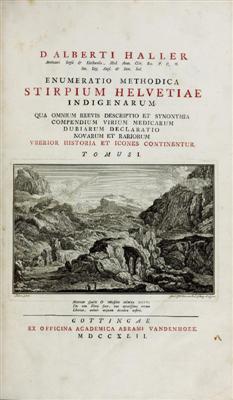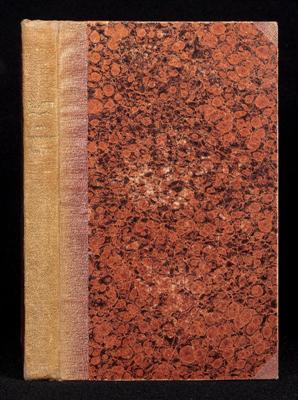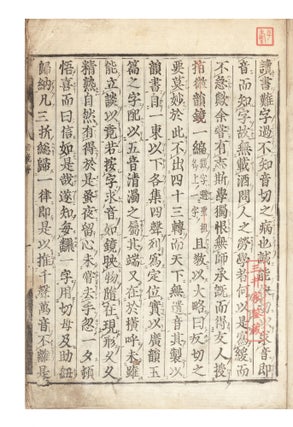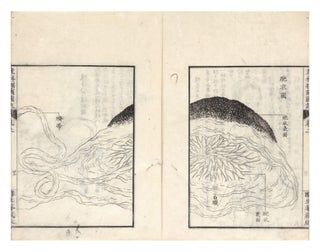![Item ID: 9019 SŎJŎN ŎNHAE or Seojeon eonhae 書傳諺解 [Vernacular Explanations of the Traditions of the Document Classic].](https://jonathanahill.cdn.bibliopolis.com/pictures/9019.jpg?width=768&height=1000&fit=bounds&auto=webp&v=1681747442)
SŎJŎN ŎNHAE or Seojeon eonhae 書傳諺解 [Vernacular Explanations of the Traditions of the Document Classic].
12 columns per page, 23 characters per column. Printed in Hangul & Chinese characters throughout. 56; 48; 55; 50; 62 numbered folding leaves. Five vols. Large 8vo (330 x 215 mm.), orig. wrappers (wrappers somewhat rubbed), old stitching. Kyŏngsang: Provincial Government Offices, 1862.
A scarce translation into Korean, printed in Hangul and Chinese characters throughout, of the main text of the Document Classic, one of the oldest texts in the Confucian canon. It has been traditionally ascribed to several authors, including the Duke of Zhou. The Document Classic (or Book of Documents) contains documents purporting to originate with the earliest Chinese rulers, with many documents in the form of addresses by the kings or their ministers. This Korean translation was printed at the provincial government offices of Kyŏngsang in southeastern South Korea, probably in 1862. The translation appears to have been first published in 1820.
Like other vernacular translations of classical Confucian texts, this book was probably intended as a tool for educating readers with limited classical Chinese literacy. The book does not contain the scholarly apparatus (commentaries and illustrations) seen in classical Chinese editions produced in Chosŏn for an educated readership. What this book does that those editions do not do is to give the Korean pronunciation for all the Chinese characters of the original text. Furthermore, in lieu of commentary, every passage of original text is followed by a Korean translation. In the translation, the original Chinese characters have been moved around as required by Korean word order and supplemented by vernacular Korean words and grammatical particles.
The Korean transcription of the title differs from that seen in the 1820 edition of Sŏjŏn ŏnhae held at Staatsbibliothek zu Berlin (copies of the same edition are also held at Changsŏgak [Jangseogak] in Seoul, call number MF35-1293~94, and Kyujanggak, call number 74, 140, 302-305, etc.).
Our copy says /se tyen en hoi/ (Yale romanization for the transcription of Middle Korean), whereas the Berlin copy says /sye cyen en hoi/. The syllable sye, used in the Berlin copy, is more archaic than se (i.e., sŏ), seen in ours. Conversely, the Berlin copy’s cyen is closer to modern Korean cen (i.e., chŏn) than our copy’s tyen. A cursory comparison between the Korean portion of the main text did not reveal any differences, however; it appears to be the same translation. Perhaps for this reason, no mention is made of any peculiarities of the Korean text in our edition in the detailed catalogue of linguistic sources held at Kyujanggak, which also holds a copy of our edition (call number 奎 12216-3). See Sŏul Taehakkyo Kyujanggak, ed., Kyujanggak sojang ŏmunhak charyo: ŏhak p’yŏn: haesŏl, 178.
Our copy carries the date imsul 壬戌, a year in the 60-year cycle. The Kyujanggak catalogue conjectures that it corresponds to 1862 (as opposed to 1802, etc.), and we believe it is correct.
Fine set. Some light dampstaining towards the ends of several of the volumes.
References
Sŏul Taehakkyo Kyujanggak, ed., Kyujanggak sojang ŏmunhak charyo: ŏhak p’yŏn: haesŏl. Seoul: T'aehaksa, 2001.
Price: $9,500.00
Item ID: 9019




